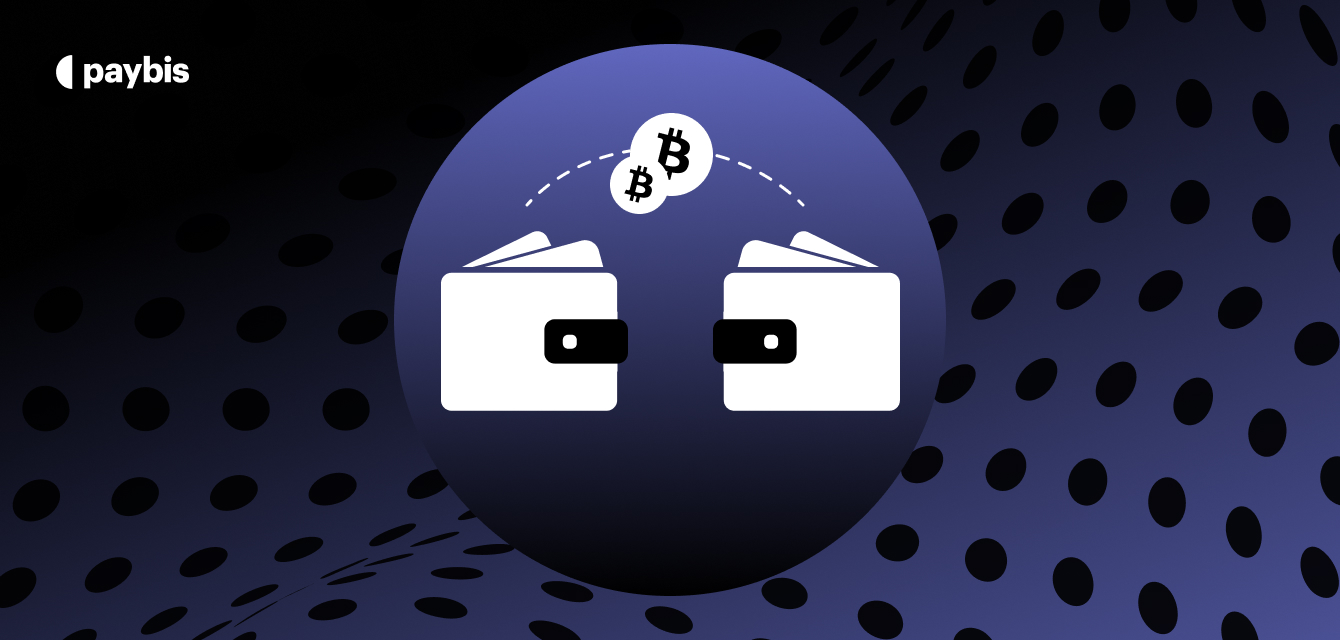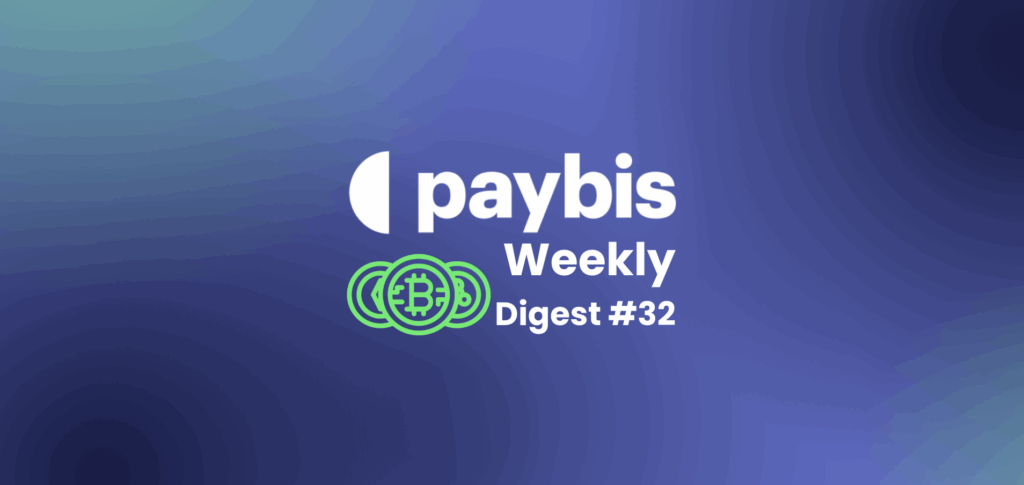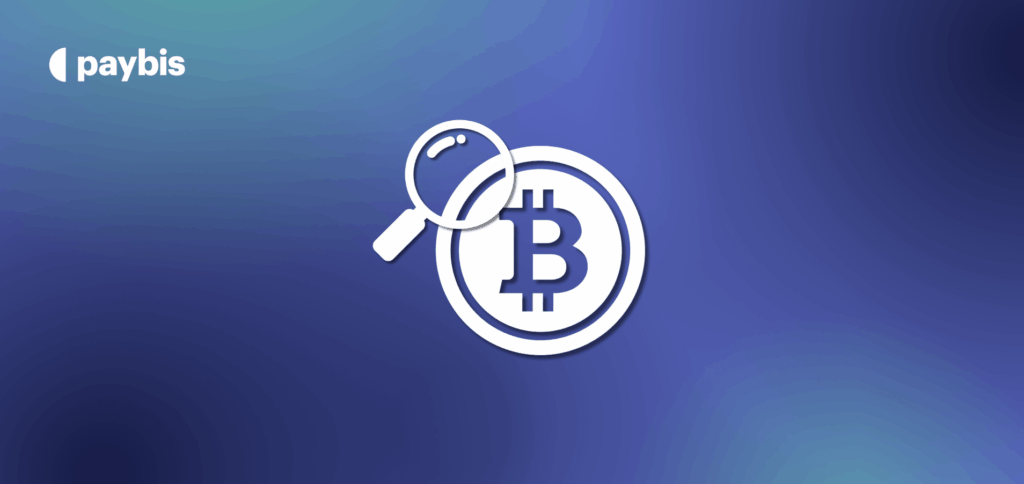How To Send Bitcoin To Another Wallet
Sending Bitcoin to another wallet can seem like a daunting task if you’re new to the space.
Learn what is Bitcoin here.
Bitcoin, while being the most popular cryptocurrency, is not the most user-friendly. Did you know there are multiple types of Bitcoin addresses? Such revelations are perplexing to the new user.
However, with a basic understanding of Bitcoin wallets and addresses, setting up your wallet correctly, and taking necessary security measures, you can confidently initiate a Bitcoin transaction and send your coins to another wallet.
This guide will break down the steps involved. We’ll make it easy for you to navigate Bitcoin transactions.
Table of contents
- Understanding the Basics of Bitcoin Wallets
- Setting Up Your Bitcoin Wallet
- Useful links
- Initiating a Bitcoin Transaction
- Choosing the Right Transaction Fee
- Sending Bitcoin to Another Wallet: Step-by-Step Guide
- Common Mistakes to Avoid When Sending Bitcoin
- Tracking Your Bitcoin Transaction
- What app can I use to send Bitcoin?
- How to Send Bitcoin from Paybis to Another Wallet
- How Long Does It Take To Send Bitcoin to Another Wallet?
- Conclusion
Understanding the Basics of Bitcoin Wallets
Before you can send Bitcoin, you need a place to store it — a Bitcoin wallet. Think of a Bitcoin wallet as analogous to a digital bank account for your cryptocurrency.
A Bitcoin wallet is a digital repository where you can store and manage your Bitcoins. It allows you to send and receive Bitcoins, view your transaction history, and manage your private keys. There are several types of Bitcoin wallets available, each with its own unique features and security measures.
Bitcoin wallets are broadly classified into:
- Hot Wallets: These wallets are connected to the internet (software, mobile, or web-based), providing convenient access but with slightly increased security risks.
- Cold Wallets: These wallets store your Bitcoin offline (often hardware devices or paper wallets), offering the highest level of security but requiring more technical setup.
Some of the most popular types of Bitcoin wallets include:
- Hardware Wallets
- Software Wallets
- Web Wallets
- Paper Wallets
- Mobile Wallets
- Hybrid Wallets (Paybis)
It is important to choose the right type of wallet that suits your needs and preferences.
Understanding the Different Types of Bitcoin Wallets
As mentioned earlier, there are different types of Bitcoin wallets available.
Let’s take a closer look at each type.
Hardware Wallets
Hardware wallets are physical devices that securely store your private keys offline. They provide an extra layer of security by keeping your private keys away from potential online threats.
Software Wallets
Software wallets are applications or programs that you can install on your computer or mobile device. They allow you to manage your Bitcoins and make transactions using your device.
Web Wallets
Web wallets are online services that store and manage your private keys on their servers. They are accessible through a web browser and offer convenience and accessibility.
Paper Wallets
Paper wallets are physical documents that contain your Bitcoin addresses and private keys. They are usually printed on paper and can be securely stored offline.
Mobile Wallets
Mobile wallets are applications that you can install on your smartphone or tablet. They allow you to carry your Bitcoins with you and make transactions on the go.
Hybrid Wallets
Paybis Wallet is a hybrid wallet — this means it provides security similar to a hardware wallet but the convenience of a software wallet and the accessibility of a mobile wallet.
Related Link: Buy Bitcoin with Credit or Debit Card, Paybis Send
Types of Bitcoin Addresses Explained
Bitcoin addresses are used to send and receive transactions on the Bitcoin network. They are alphanumeric strings that represent a possible destination for a Bitcoin payment.
There are four main types of Bitcoin addresses, each with different characteristics and purposes. Here’s a detailed look at each type:
Pay to Public Key Hash (P2PKH)
- Prefix: Addresses start with the number “1”.
- Structure: These addresses are created by using a SHA-256 hash and a RIPEMD-160 hash on a public key, then encoding the result using Base58Check to form the address.
- Purpose: P2PKH was the original Bitcoin address format and is still widely used. It directly hashes and encodes the public key into a Bitcoin address.
- Security: Provides basic security. The public key is only revealed when you spend bitcoins, not when you receive them, which adds a layer of privacy.
Pay to Script Hash (P2SH)
- Prefix: Addresses start with the number “3”.
- Structure: These addresses represent a hash of a script rather than just a public key. The address is derived by hashing the redeem script with SHA-256 and RIPEMD-160, followed by Base58Check encoding.
- Purpose: Introduced by BIP 0016, P2SH is used for transactions that require more than one key to authorize a transaction (multisig) or complex scripts. It simplifies the sending process by moving the burden of crafting the script from the sender to the recipient.
- Security: Increases flexibility and security in transactions, allowing for multi-signature transactions that require multiple approvals to execute a transaction.
Bech32 (SegWit)
- Prefix: Addresses start with “bc1”.
- Structure: These addresses use the Bech32 encoding format and were introduced by BIP 0173. They are used for SegWit (Segregated Witness) transactions and can be distinguished by their entirely lowercase or uppercase format.
- Purpose: Bech32 addresses are designed to support SegWit technology, which reduces transaction sizes, increases block capacity, and improves scalability. They also correct for errors in addresses with a built-in error detection code.
- Security: SegWit addresses improve blockchain efficiency and lower transaction fees. They also improve scalability and mitigate issues like transaction malleability.
Pay to Taproot (P2TR)
- Prefix: Addresses also start with “bc1” but specifically use “bc1p”.
- Structure: Introduced by BIP 0341, these addresses also utilize Bech32 encoding and are designed for Taproot transactions, which involve Schnorr signatures.
- Purpose: Taproot is a recent upgrade that enhances Bitcoin’s privacy, efficiency, and smart contract capabilities. It allows for more complex conditions to be met for transaction execution while appearing as a regular transaction for better privacy.
- Security: Offers the highest level of security and privacy currently available in Bitcoin transactions. It simplifies and obfuscates the complexity of smart contracts and multisig transactions, making them indistinguishable from regular transactions.
Setting Up Your Bitcoin Wallet
Before you can send Bitcoin to another wallet, you need to set up your own Bitcoin wallet. The process may vary depending on the type of wallet you choose, but here are some general steps to get you started:
- Choose a Wallet: Decide on the type of Bitcoin wallet that suits your needs.
- Download or Purchase the Wallet: Download the wallet software or purchase a hardware wallet.
- Create a New Wallet: Generate a new Bitcoin wallet address and a backup seed phrase to secure your wallet.
- Secure Your Wallet: Set up additional security measures such as two-factor authentication and encryption.
Once you have set up your Bitcoin wallet, you are ready to send Bitcoin to another wallet.
Alternatively, you can use the Paybis Wallet. It is a multi-chain on-chain wallet, which means that you can store more than just Bitcoin and all transactions (including wallet balance) can be verified through independent block explorers.
Useful links
Initiating a Bitcoin Transaction
Now that you have your Bitcoin address, you’re ready to send! Let’s walk through the steps.
Step 1: Access Your Wallet
First, you need to open and log into your Bitcoin wallet. This could be a software wallet on your computer or smartphone, a web wallet accessed through a browser, or a hardware wallet connected to your device.
Step 2: Enter the Recipient’s Address
- Find the ‘Send’ Option/Button: Navigate to the section of your wallet labeled ‘Send’ or something similar.
- Enter the Recipient’s Bitcoin Address: Carefully input the recipient’s Bitcoin address. This address is a string of alphanumeric characters, which can also be represented as a QR code. Double-check the address to avoid errors, as transactions cannot be reversed.
Step 3: Specify the Amount
- Enter the Amount of Bitcoin: Input the amount of Bitcoin you wish to send. Wallets may allow you to toggle between Bitcoin (BTC) and your local currency for ease of use.
- Consider Transaction Fees: Wallets typically suggest a transaction fee based on current network conditions, which you can adjust. Higher fees can lead to faster confirmation by the network.
Step 4: Review and Confirm
- Review All Details: Double-check the amount of Bitcoin, the recipient’s address, and the transaction fee. Mistakes in the address or amount can result in irreversible losses.
- Send the Transaction: Once you’re sure all details are correct, confirm the transaction. Depending on the wallet, you may need to enter a password, or PIN, or confirm the transaction on a hardware wallet.
Step 5: Wait for Confirmation
Once submitted, your transaction will be broadcast to the Bitcoin network. It needs to be included in a block by miners, which typically begins with one confirmation. More confirmations increase the security of the transaction.
Most wallets provide a feature to view your transaction on a block explorer, where you can see confirmations as they happen.
Choosing the Right Transaction Fee
When sending Bitcoin, you have the option to choose the transaction fee (Bitcoin network fee). The transaction fee determines the priority of your transaction and the time it takes to get confirmed. Keep in mind that higher transaction fees generally result in faster confirmation times.
Most Bitcoin wallets provide recommended transaction fee options based on the current network congestion and transaction volume. It is advisable to choose a fee that is neither too low nor too high to ensure a reasonable confirmation time.
If it is an emergency or you are in a hurry, you have the option to ramp up the BTC network fee you are willing to pay so that your transaction goes through sooner than the rest.
Sending Bitcoin to Another Wallet: Step-by-Step Guide
Now that you understand the basics of Bitcoin wallets and how to secure them, let’s dive into the step-by-step process of sending Bitcoin to another wallet:
- Open Your Bitcoin Wallet: Launch your Bitcoin wallet software or app.
- Choose the Send Option: Look for the option to send Bitcoin or initiate a new transaction.
- Enter the Recipient’s Address: Copy and paste the recipient’s Bitcoin address into the designated field.
- Specify the Amount: Enter the amount of Bitcoin you want to send to the recipient.
- Review the Transaction Details: Double-check the recipient’s address and the amount to ensure accuracy.
- Confirm and Send: Once you are satisfied with the transaction details, confirm the transaction and send the Bitcoin.
After completing these steps, your Bitcoin transaction will be broadcast to the Bitcoin network for verification and confirmation.
Common Mistakes to Avoid When Sending Bitcoin
When sending Bitcoin to another wallet, it is important to be cautious and avoid common mistakes that can result in loss of funds. Here are some mistakes to avoid:
- Double-check the recipient’s address to avoid sending Bitcoin to the wrong wallet.
- Ensure the accuracy of the transaction amount to avoid sending more or less Bitcoin than intended.
- Be cautious of phishing attempts and avoid clicking on suspicious links or providing your private keys to unknown parties.
- Regularly update your wallet software and follow security best practices to minimize the risk of malware or hacking.
Tracking Your Bitcoin Transaction
After sending Bitcoin to another wallet, you may want to track the progress and confirmation of your transaction.
When you send a Bitcoin transaction, you receive a transaction ID (often abbreviated as TxID), which is a unique string of alphanumeric characters that identifies your transaction on the Bitcoin network. This ID can usually be found in the transaction history of your Bitcoin wallet.
A block explorer is an online tool that allows you to search and navigate the blockchain. Some popular block explorers include:
Go to the block explorer of your choice and enter the transaction ID into the search field. This will bring up detailed information about your transaction.
On the transaction page, you will see several important pieces of information:
- Transaction Status: Whether the transaction is confirmed or still pending. A transaction typically needs at least one confirmation to be considered secure, but more confirmations increase security.
- Confirmations: The number of times a transaction has been confirmed by the blockchain. More confirmations mean the transaction is more secure.
- Block Height: The block number in which your transaction was included.
- Amount Transferred: The amount of Bitcoin that was sent.
- Fees Paid: The transaction fees that were paid to miners.
- Sending and Receiving Addresses: The Bitcoin addresses involved in the transaction.
What app can I use to send Bitcoin?
There are many excellent apps you can use to send Bitcoin. Here’s a breakdown of popular choices, along with their key features.
Hardware Wallets:
- Ledger Nano S Plus/X: Market leader in hardware wallets with a balance of security and features.
- Trezor (Model One/T): Another top option with a user-friendly interface and strong security.
- KeepKey: Budget-friendly hardware wallet with a larger screen and sleek design.
Software Wallets
- Exodus: Multi-currency wallet with an appealing interface and built-in exchange, good for beginners.
- Electrum: Highly-respected Bitcoin-only wallet offering advanced features and customization.
- Mycelium: Mobile-focused Bitcoin wallet with a strong reputation and useful features.
Paybis Wallet
Convenient and free wallet included with your Paybis account, balancing security and ease of use.
- MPC Technology: Paybis utilizes Multi-Party Computation (MPC) technology. This means your private keys are split into fragments and distributed across multiple secure servers. This significantly enhances security compared to single-device storage, as no single point of failure exists.
- Cold Storage: A significant portion of Bitcoin held on Paybis is secured in cold storage facilities. These are offline locations, often underground, designed to protect cryptocurrency from hacking attempts.
Factors to Consider When Choosing
- Security: Hardware wallets offer the highest security by storing your keys offline. Software wallets can be vulnerable if your device is compromised.
- Convenience: Software wallets are easier to access for frequent use, while hardware wallets require a physical connection.
- Features: Consider whether you need multi-currency support, advanced customization, or specific built-in features.
- Cost: Hardware wallets require an upfront purchase, while software wallets are generally free. Paybis Wallet is free forever.
How to Send Bitcoin from Paybis to Another Wallet
Sending Bitcoin from Paybis to another wallet is a straightforward process. Follow these steps:
- Sign in to your Paybis account.
- Navigate to the “Wallets” section.
- Select the Bitcoin wallet.
- Click on the “Withdraw” option.
- Enter the recipient’s wallet address.
- Specify the amount of Bitcoin you want to send.
- Review the transaction details and confirm.
Paybis will initiate the Bitcoin transfer to the specified wallet address. Note that the transaction may take some time to be confirmed depending on network congestion.
If you want to pay with BTC for goods and services, the process may be slightly different. Find out how to pay with Bitcoin here.
How Long Does It Take To Send Bitcoin to Another Wallet?
The time it takes to send Bitcoin to another wallet can vary depending on multiple factors, including network congestion and transaction fees. On average, a Bitcoin transaction can take anywhere from a few minutes to a few hours to be confirmed.
During periods of high network activity, such as during a bull market or when there is a surge in transaction volume, the confirmation time may increase. To speed up the confirmation process, you can choose a higher transaction fee.
It is important to stay patient and allow sufficient time for the transaction to be confirmed. You can track the progress of your transaction using a blockchain explorer by entering the transaction ID or hash.
Conclusion
With this comprehensive guide, you should now have a good understanding of how to send Bitcoin to another wallet. Paybis also lets to sell Bitcoin and receive fiat to your bank account.
Remember to always double-check the recipient’s address, choose an appropriate transaction fee, and follow security best practices to ensure the security of your Bitcoin transactions.
Read more Bitcoin-related articles on the Paybis blog.
FAQ
How to send Bitcoin instantly?
Some wallets and services, like Cash App, support instant Bitcoin transfers to other users within the same platform.
The Lightning Network is a layer built on top of Bitcoin, enabling near-instant, low-fee transactions. Many wallets now support Lightning payments.
Standard Bitcoin transactions on the main blockchain can take time for confirmation (usually 10 minutes to an hour or longer). “Instant” is relative when it comes to Bitcoin.
How do I send Bitcoins to another user?
-
- Obtain their Bitcoin address
-
- Use your wallet’s “Send” function
-
- Enter the address and amount
-
- Consider transaction fees
-
- Review and confirm
How do I give someone a Bitcoin wallet?
Purchase a hardware wallet and gift it to them pre-loaded with a small amount of Bitcoin (along with secure instructions on usage).
Generate a paper wallet containing a Bitcoin address and private key. Gift it as a physical representation of their Bitcoin holdings.
Guide them in choosing and installing a reputable software wallet, focusing on security and good practices.
What is the cheapest way to send Bitcoin?
-
- Optimize Timing: Transact during periods of lower network congestion (often weekends or late at night) for lower fees.
-
- Flexibility with Confirmation: If speed isn’t critical, opt for a lower transaction fee, and be patient with confirmations.
-
- Batch Transactions: Combine multiple small transfers into a single transaction to save on fees.
-
- Explore Layer 2: Utilize the Lightning Network for small payments at very low fees.
Disclaimer: Don’t invest unless you’re prepared to lose all the money you invest. This is a high‑risk investment and you should not expect to be protected if something goes wrong. Take 2 mins to learn more at: https://go.payb.is/FCA-Info




